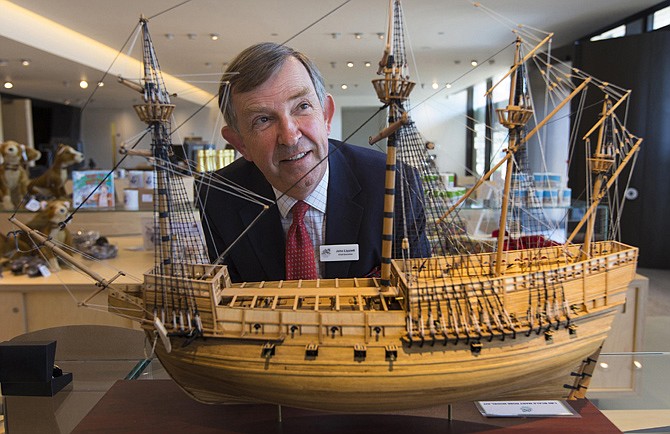LONDON (AP) - The remains of a Tudor warship that sank more than 400 years ago will be displayed along with thousands of its artifacts for the first time at a new British museum.
Museum officials and historians say the $41 million museum not only allows visitors to view the wreck of the Mary Rose, Henry VIII's flagship, but also provides a snapshot of Tudor life onboard the vessel.
The Mary Rose Museum, located at the historic dockyards in the southern English city of Portsmouth - near the exact spot where the 16th-century vessel was built - opens to visitors Friday.
The Mary Rose led the English fleet in battle against France from 1512, but sank after three decades in service during the Battle of The Solent on July 19, 1545. The ship remained on the seabed off the south coast of England and was not discovered until 1971, when divers noticed its exposed timbers.
After further investigations and numerous dives - including one by Prince Charles - the hull section of the ship was finally lifted to the surface in 1982, an event that was broadcast on television to millions of viewers around the world at the time.
The museum is built like a ship, housing both the wooden hull and galleries displaying many of the 19,000 artifacts collected from the wreck, from leather boots to cannons to a skeleton of the ship's dog, Hatch.
"This isn't just about a ship, it's about life in Tudor times," said John Lippiett, chief executive of the Mary Rose Trust. "It is a memorial to the 500 who lost their lives on the Mary Rose."
Historian and television presenter David Starkey went further, describing the Mary Rose as an "English Pompeii, preserved by water, not fire."
The recovered section of the wooden hull, measuring about 115 feet long and 36 feet tall, will be kept in an airtight chamber with viewing windows as officials finish the final stages of conserving the wreck. Millions of liters of water and wax chemicals have been sprayed on the wreck to preserve it since it was raised to the surface, and the museum expects to remove its internal walls surrounding the hull in 2017 when it is fully dry.
The new museum, located next to Lord Nelson's flagship, the HMS Victory, replaces a smaller museum which only housed some of the artifacts, not the wreck.

